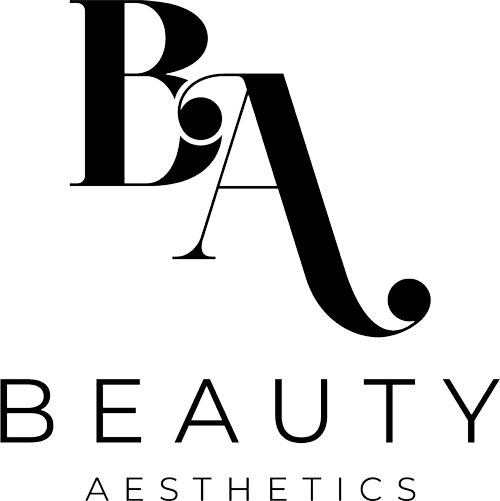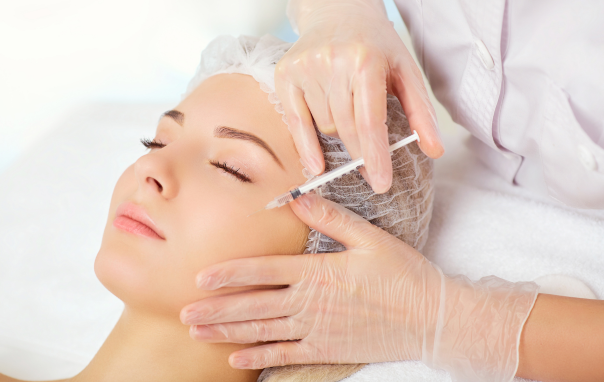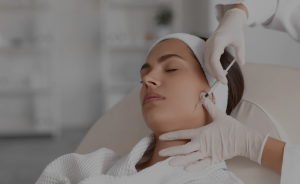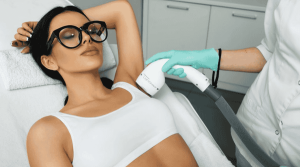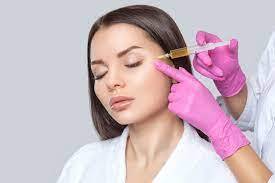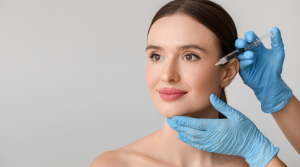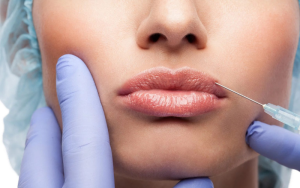The journey toward a youthful-looking skin often leads to two popular options in the world of cosmetic enhancements: Botox and dermal fillers. These cosmetic treatments are FDA-approved treatments designed to address the appearance of wrinkles, lines, and other aging-related concerns. With advanced treatments in cosmetic medicine, both Botox and fillers have become go-to non-surgical and safe procedures for those seeking a balanced, harmonious appearance. In this comprehensive guide, we’ll explore the key differences, benefits, and potential risks of botox vs. fillers, helping you make an informed decision that aligns with your aesthetic goals.
Botox: Overview and Uses
Definition of Botox
Botox is the brand name for a botulinum toxin product derived from the bacterium Clostridium botulinum. Delivered through botulinum toxin injections, it works by temporarily blocking the communication between nerves and facial muscles, reducing muscle activity that contributes to dynamic wrinkles. These are lines of expression—such as frown lines, forehead wrinkles, and crow’s feet—that become visible during facial movements. Because Botox interrupts nerve signals, it effectively prevents muscle movements that cause the appearance of wrinkles caused by repeated facial expressions over time.
Application for Dynamic Wrinkles
Dynamic wrinkles appear when we engage our facial muscles during activities like smiling, laughing, or furrowing our brow. Botox injections focus on relaxing these overactive muscles, especially in areas like the forehead lines, glabellar lines (between the eyebrows), and crow’s feet. By decreasing muscle-relaxing effect on these regions, Botox can also serve as a preventative treatment, helping reduce the formation of deep lines later. In some cases, it’s even used for excessive sweating or Overactive bladder, reflecting how versatile botulinum (the active substance) can be in medical aesthetics.
Popular Treatment Areas: Frown Lines and Crow’s Feet
Two of the most popular treatment areas for Botox are frown lines and crow’s feet. Frown lines occur between the eyebrows and can give the face a perpetually concerned look, while crow’s feet form at the corners of the eyes and deepen with smiling or squinting. The continued wrinkle-reducing effects from Botox Cosmetic typically last three to four months, although individual goals and baseline skin health may influence how long results remain. Because it’s a non-surgical and minimally invasive procedure, patients can generally resume daily activities shortly after treatment.
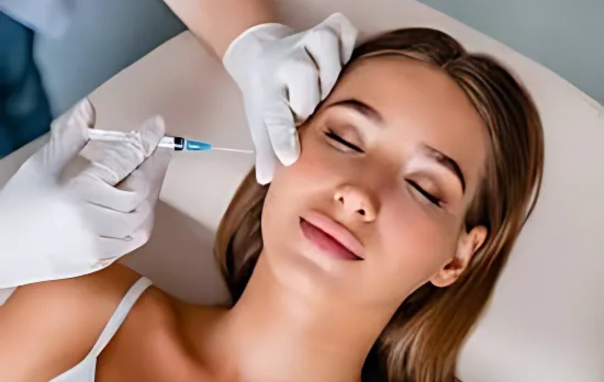
Dermal Fillers: Overview and Uses
Definition of Dermal Fillers
Dermal fillers—also known as facial fillers, injectable fillers, or soft tissue fillers—are injectable substances designed to add volume, smooth out lines, and restore facial contours. Each type of filler used can vary, ranging from calcium hydroxyapatite and poly-L-lactic acid to acid fillers made from hyaluronic acid, a natural substance found in the body. These filler injections aim to address static wrinkles and volume loss, delivering immediate results that can last anywhere from six months to two years, depending on the filler material and filler over time breakdown in the body.
Function for Static Wrinkles
Static wrinkles are the lines at rest that remain visible even when your face is not in motion. Examples include marionette lines, smile lines, and lip lines. Over time, factors such as loss of collagen, loss of plumpness, UV light (ultra-violet light), light exposure, and the passage of time contribute to skin damage and volume loss. Dermal filler treatments help restore youthful fullness to these areas by “filling in” the deep-set wrinkles and appearance of lines, thus giving a natural-looking plumpness to the facial anatomy.
Popular Treatment Areas: Lips and Cheeks
One of the most widely sought-after dermal filler procedures is Lip fillers, used to add volume to lip lines, create a lip flip effect, and enhance overall facial appearance. Another common area is the cheeks, where facial filler can address loss of volume and create a balanced appearance. In addition to lips and cheeks, dermal fillers can also help reduce the appearance of scars, acne scars, or even contour the jawline. By replenishing lost volume, filler treatment serves as an alternative to surgery for sculpting facial contours without an invasive surgery.
Differences Between Botox and Dermal Fillers
Mechanism of Action
The primary difference between Botox and fillers lies in how they address lines. Botox—a form of botulinum toxin—blocks nerve signals to muscles, temporarily reducing their movement to smooth out dynamic wrinkles. Dermal fillers, on the other hand, add volume to the skin using various injectable substances like calcium hydroxylapatite or poly-L-lactic acid. This volumizing effect is ideal for deep lines, marionette lines, and static wrinkles caused by loss of volume.
Types of Wrinkles Treated
Botox is best for expression lines (also known as dynamic lines) such as horizontal lines on the forehead and frown lines. Conversely, dermal filler injections address static wrinkles like laugh lines, Lip lines, and deep-set wrinkles that remain visible even when the face is at rest. While Botox prevents muscle activity and helps reduce appearance of wrinkles caused by facial expressions, fillers compensate for loss of plumpness in the skin over time.
Duration of Results
Both Botox injections and filler injections offer temporary improvements. Botox typically lasts three to four months before muscle movements gradually return to normal. Dermal fillers, depending on the type of filler used—like calcium hydroxylapatite or hyaluronic acid—can last between six months to two years. Some fillers, such as those containing poly-L-lactic acid, stimulate collagen production, offering even longer-lasting results. Choosing between the two often comes down to the desired cosmetic goals, risk factors, and how often you’re willing to return for additional treatments.
Pros and Cons of Botox
Benefits of Botox
- Effective treatment for dynamic wrinkles: Targets forehead lines, crow’s feet, and frown lines.
- Muscle-relaxing effect can also treat excessive sweating and sometimes reduce tension in overactive muscles.
- Preventative measure: Early use of Botox Cosmetic can delay the formation of deep lines.
- Non-invasive procedure with no surgical procedure required: Patients can resume daily activities quickly.
- FDA-approved treatment widely recognized for its safety profile under qualified professionals.
Potential Side Effects
While Botox is generally considered safe, there are some potential side effects:
- Minor side effects such as redness, bruising, or Skin rash at injection sites.
- Severe side effects can include drooping of nearby muscles, difficulty swallowing, or infection—although these are rare.
- In extremely uncommon cases, botulinum can spread beyond the treated area, affecting other nerves.
It’s essential to disclose your medical history to your medical professional and discuss risk factors, like Cold sores, fungal infections, or bacterial infection, prior to Botox injections.
Treatment Duration and Recovery
Average treatment time for Botox is about 15 to 30 minutes, often described as a common treatment that fits easily into a lunch break. Ice packs can be used to minimize swelling. Most patients notice results within a few days, with full continued wrinkle-reducing effects visible by two weeks. You may need follow-up appointments every three to four months to maintain your natural-looking results.
Pros and Cons of Dermal Fillers
Benefits of Dermal Fillers
- Immediate results: Filler injections provide an instant boost in facial volume.
- Versatility: Addresses lip lines, marionette lines, deep-set wrinkles, and even acne scars or scars from injury.
- Certain types of fillers, like poly-L-lactic acid, encourage collagen production for long-lasting cosmetic results.
- Minimal downtime compared to a surgical procedure.
- Range of injectable substances available, from synthetic material to natural substance like hyaluronic acid, to suit individual goals.
Potential Side Effects
Dermal fillers are safe procedures but can carry some adverse effects:
- Common side effects include bruising, swelling, or tenderness at injection sites.
- Severe side effects like Vascular occlusion—a blockage of a blood vessel—can occur if not administered by trusted professionals.
- Infection can happen if proper sterilization procedures aren’t followed, leading to potential Skin rash or more serious complications.
- Allergic reactions to filler material or synthetic material used in injectable treatments can lead to rashes or lumps.
Selecting a professional who has studied articles on anatomy and thoroughly understands facial anatomy is crucial to minimize risk. Plastic surgeons, dermatologists, and other qualified professionals often conduct skin testing and thoroughly review each patient’s medical history before beginning filler treatment.
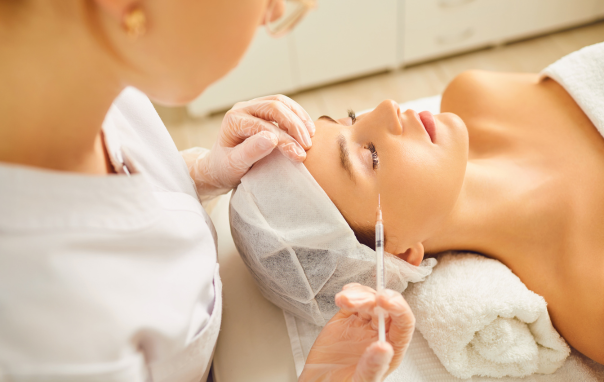
Choosing the Right Procedure for You
Assessing Treatment Goals
Your cosmetic goals and aesthetic goals dictate whether Botox or dermal fillers are a better option. If your primary difference in concern revolves around dynamic lines—like lines of expression—with no significant volume loss, Botox may be the more effective treatment. Conversely, if you notice deep-set wrinkles, marionette lines, or loss of volume in your cheeks or lips, filler might be the best treatment option.
Considering Skin Type and Age
Your skin type, baseline skin health, and the severity of skin concern (such as active acne or Hidradenitis Suppurativa) can also influence the choice. Younger individuals often seek Botox for preventative treatment, while those facing more pronounced lines at rest might require filler. UV light (sun exposure) can accelerate skin damage and expedite the formation of both dynamic wrinkles and static wrinkles, so a good skincare regimen is important in addition to any cosmetic procedures.
Budget and Cost Comparison
Botulinum products are typically priced per unit, and the average forehead might require around 10-20 units, while filler is often charged per syringe. Different types of fillers have varying costs, with calcium hydroxylapatite, poly-L-lactic acid, or hyaluronic acid each carrying a different price tag. While Botox may need additional treatments every few months, dermal fillers can have a longer-lasting effect but come with a higher initial cost. In many facial rejuvenation clinics, you’ll find affordable options or package deals, but always prioritize quality and trusted professionals over price alone.
Why Choose Beauty Aesthetics, Toronto?
Beauty Aesthetics, Toronto has established itself as a leading aesthetic clinic offering a wide variety of advanced treatments in cosmetic injectables. With a team of qualified professionals—including medical doctors and specialists trained in facial rejuvenation—we provide a comprehensive guide to help you achieve a beautiful, balanced appearance. Our approach to Botox and filler injections prioritizes patient safety, comfort, and natural beauty, using only FDA-approved treatments. Whether you’re seeking an alternative to surgery for deep-set wrinkles or exploring invasive procedure solutions for more pronounced aging-related concerns, our professional staff tailors treatments to your individual goals. With an emphasis on communication, medical history review, and thorough risk factors assessment, Beauty Aesthetics, Toronto ensures every patient experiences top-tier care and long-lasting cosmetic results. Our facility offers micro-invasive glaucoma surgery support, a range of cosmetic injections, and the latest in anti-aging treatments, making us a premier destination for all your facial rejuvenation needs.
Conclusion
Choosing between Botox and fillers largely depends on the types of wrinkles you wish to address, your beauty goals, and your tolerance for potential risks or minor side effects. Both cosmetic enhancements provide safe procedures for achieving a youthful appearance without an extensive surgery. By understanding the key difference in how each injectable treatment works, you can make the best decision for your facial appearance. If you’re ready to take the next step toward natural-looking and long-lasting cosmetic results, Beauty Aesthetics, Toronto stands ready to guide you in your facial rejuvenation journey.
